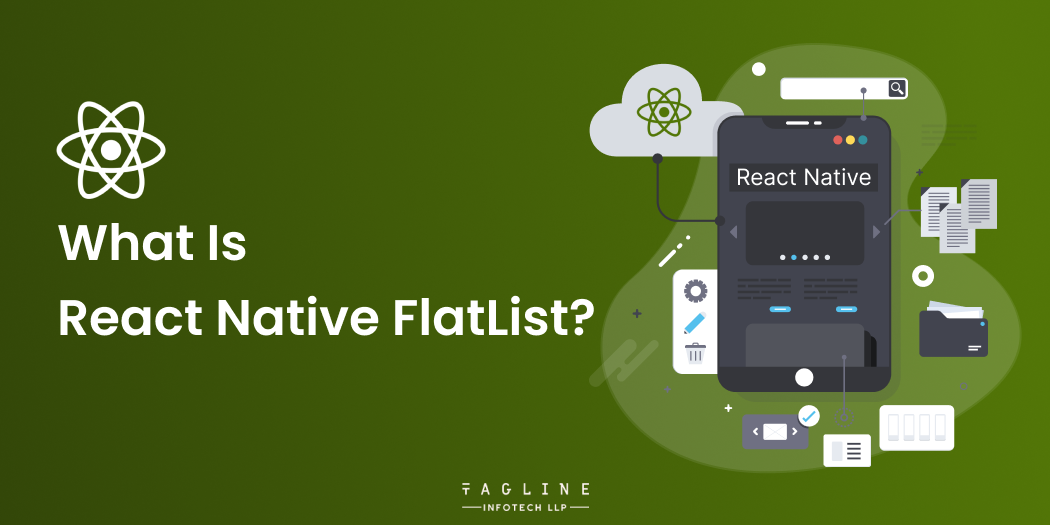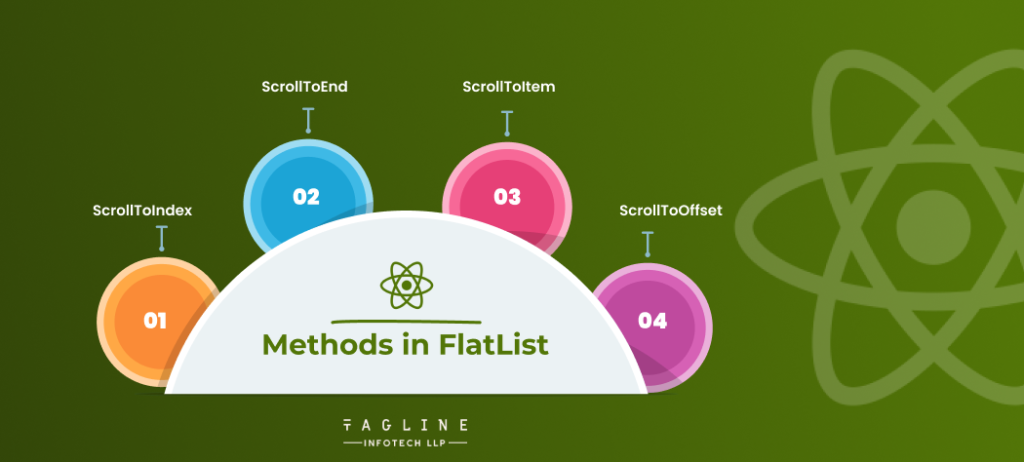How ChatGPT and RPA are Transforming Automation’s Future
May 17, 2024
Home >> React Native >> What is React Native FlatList?

Quick Summary
React Native FlatList is a component that allows developers to render lists with minimal code and zero hassle. It is a performant interface for generating essential, flat lists, supporting the most handy features such as fully cross-platform, optional horizontal mode, configurable viewability callbacks, header support, footer support, separator support, pull to refresh, scroll loading, and scrollToIndex support.
It is a component that renders items in a scrollable view. It is scrollable and eliminates the need for developers to write a loop function.
Developers only need to supply a list of items in an array, and the FlatList will render it for them in the most excellent ways possible.
React Native FlatList is a powerful element that offers several benefits to builders. It is a need-to-have factor for any React Native developer. FlatList is scrollable and eliminates the need for builders to write a loop characteristic.
It supports go-platform, optionally available horizontal mode, configurable viewability callbacks, header aid, footer help, separator help, pull to refresh, scroll loading, and scrollToIndex assist. FlatList is reasonably customizable and has several beneficial homes to trade its appearance and capability.
The FlatList component requires two primary properties for showing data on the screen: data and renderItem. The data is the elements to be rendered, while the renderItem takes each item and returns a formatted version.
javascript
import { FlatList } from "react-native";
<FlatList
data={/* the array to render */}
renderItem={/* each item from the array will be rendered here */}
keyExtractor={/* extract keys for each item in the array */}
ItemSeparatorComponent={/* rendered in between each item */}
ListHeaderComponent={/* rendered at the top of the list */}
ListFooterComponent={/* rendered at the bottom of the list */}
onEndReached={/* called when all rows have been rendered and the list has been scrolled to the end */}
onEndReachedThreshold={/* how far from the end (in units of visible length of the list) the bottom edge of the list must be from the end of the content to trigger the onEndReached callback */}
onRefresh={/* called when the view starts refreshing */}
refreshing={/* set this true while waiting for new data from a refresh */}
/>
FlatList is a React Native component that displays a collection of structured and often dynamic data in a scrollable view. It is a convenience wrapper around VirtualizedList and thus inherits its props (as well as those of ScrollView) that aren’t explicitly listed.
FlatList is scrollable and eliminates the need for developers to write a loop function. Developers only need to supply a list of items in an array, and the FlatList will render it for them in the most excellent ways possible.
“What are React Native Elements and How to Install Them?”
– Also Read Article

React Native FlatList is an effective issue that offers numerous blessings to developers.
Some advantages of the FlatList issue are Render’s gadgets in a scrollable view: FlatList is a scrollable factor that permits builders to show a collection of based and frequently dynamic statistics in a scrollable view.
It is an excellent way to display gadgets in a scrollable list view.
Looking for a React Native expert to optimize your react native flatList?
Hire our expert React Native developer and unleash the complete potential of your application. Together, we can craft a flawless, high-performance mobile experience.
FlatList is an influential element in React Native that permits builders to render lists with minimal code and zero hassle. It is scrollable and eliminates the need for developers to write a loop feature. Flatlist react native has several methods that builders can use to govern the list. These techniques encompass

This approach allows developers to scroll to the object at the required index. It takes an item as an issue that carries the index of the object to scroll to, the animated flag, and the view function. For example, scrollToIndex( index: five, animated: proper, viewPosition: zero. Five ) will scroll to the object at index five with animation and function inside the middle of the display.
This approach lets builders scroll to the end of the listing. It takes an item as an issue that consists of the animated flag. For example, scrollToEnd( lively: genuine ) will scroll to the end of the list with animation.
This technique allows developers to scroll to the item with the given item index and section index. It takes an object as a controversy that carries the itemIndex, section Index, and animated flag and considers position. For example, scrollToItem( itemIndex: 5, sectionIndex: 2, animated: real, viewPosition: 0. Five ) will scroll to the item at itemIndex five and sectionIndex 2 with animation and position it within the middle of the screen.
This technique permits builders to scroll to the offset within the listing. It takes an object as an argument that contains the offset lively flag and considers position.
For example, scrollToOffset( offset: 500, lively: real, viewPosition: 0.5 ) will scroll to the offset 500 with animation and role it in the center of the screen.
These methods are functions that may be found in the FlatList class. Each React Native component is its magnificence, and it no longer best carries props; however, it has a few methods that allow the FlatList to perform certain moves.
When an occasion is precipitated, those strategies can carry out specific operations. Ultimately, Flatlist react native will enable builders to render lists with minimum code and zero hassle. It helps fully move-platform, non-compulsory horizontal mode, configurable viewability callbacks, header aid, footer support, separator help, pull to refresh, scroll loading, and scrollToIndex guide.
FlatList has several techniques that developers can use to control the list, which include scrollToIndex, scrollToEnd, scrollToItem, and scrollToOffset.
These methods permit developers to scroll to a specific position inside the list, scroll to the end of the listing, or scroll to the item with the given item index and section index.
React Native FlatList is a powerful component that allows developers to render lists with minimal code and zero hassle.
React Native FlatList is a game-changer for efficient data rendering, benefiting your app’s performance.
Learn how this essential component is utilized by a top React Native development company. It supports fully cross-platform, optional horizontal mode, configurable viewability callbacks, header support, footer support, separator support, pull-to-refresh, scroll loading, and scrollToIndex support.
Yes, Flat List is proficient for rendering expansive datasets since it as it were renders the things that are as of now unmistakable on the screen, which makes strides performance.
Yes, you'll be able customize the appearance of separators between things within the list utilizing the ItemSeparatorComponent property, which permits you to characterize your custom separator component.

Digital Valley, 423, Apple Square, beside Lajamni Chowk, Mota Varachha, Surat, Gujarat 394101
+91 9913 808 2851133 Sampley Ln Leander, Texas, 78641
52 Godalming Avenue, wallington, London - SM6 8NW